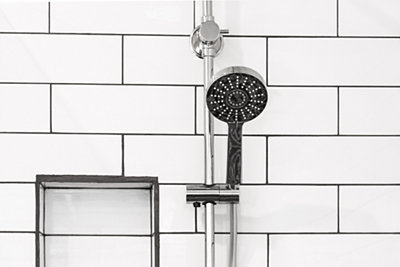The Essential Guide to Unclogging Your Shower Drain
Ah, the shower. It's your personal oasis, a place for belting out show tunes, pondering life's mysteries, and, of course, getting squeaky clean. It's all fun and games until you notice the water pooling around your feet. Suddenly, you're standing in a gross puddle of tepid, soapy water! And the culprit? A clogged drain.
Aside from this unpleasant look and feel, did you know that typhoid, hepatitis A, and E Coli love standing water and blocked drains?
But there's good news! With the right knowledge and a dash of DIY spirit, you can turn this unfortunate situation around (yes, even you, the least handy among us). Learning how to unclog a shower drain can be as straightforward as following a new recipe. You just need to know the ingredients and follow the steps.
So, are you ready to say goodbye to your shower woes and step into a cleaner, clog-free future? Let's wade right in.
Know Your Enemy
The first order of business is understanding our adversary. Most shower clogs result from a nasty mix of hair, soap scum, and the remnants of that sea salt scrub you thought would wash cleanly away. It's like a surprise party you didn't want, gathering under your drain cover.
Understanding the Hairy Situation in Your Shower Drain
It's not uncommon to find the occasional hairball lounging around our shower floors (or wrapped around your soap, making you feel like you're washing yourself with a hamster). But did you know that these seemingly harmless strands are the chief culprits of clogged drains?
Hair, by its nature, has a knack for mischief in our plumbing system. It doesn't obediently pass through like water when it slithers down the drain. Instead, it often accumulates in hard-to-reach places, forming a net that catches and holds onto other debris passing by.
Now, add soap scum to this hairy situation. Soap scum - that waxy, off-white residue left behind by soap and hard water - acts like a magnet for hair. It sticks to the strands, creating a stubborn, gooey mass that's tougher to dislodge.
But hair has more tricks up its sleeve. When wet, hair can expand, making it even more difficult to extract from the drain. This is the main reason why your go-to drain cleaner might not always work. Hair is resistant to most chemicals designed to dissolve clogs, laughing in the face of your attempts to banish it.
How to Unclog a Shower
Before we start, let's gather our unclogging artillery. In most cases, you won't need to rob a bank or even call a plumber to gather these simple items to craft your very own drain cleaner:
A cup of baking soda
Some petroleum jelly
A wire coat hanger
Spirit vinegar
A drain snake
A pot for boiling water
Rubber gloves
See, nothing too crazy there, right? Now let's get down to the nitty-gritty and talk about the steps needed to banish that standing water.
Step 1: Remove the Drain Cover
First things first, you'll need to remove the drain cover. This could be as simple as lifting it off or might require a little persuasion from a screwdriver. If it's being stubborn, a smudge of petroleum jelly around the edges can act like a sweet-talking companion, helping ease off the cover.
You may start to see the villains responsible for your situation right away. As you lift the drain cover, there's a good chance it will bring with it a matted string of slimy hair. As disgusting as this may be, keep going; you've got this.
Step 2: Inspection and Removal
Once the cover is off, take a peek down the rabbit hole. Using a flashlight might help. Can you see the culprit? Is it within reach? If so, channel your inner craftsman and unbend that wire coat hanger! Twist the end into a little homemade hook and use it to fish out the blockage.
It's not the most glamorous job but think of it as reeling in a big catch on a fishing trip... only slightly less appealing. This is where you'll want to pop on those rubber gloves to avoid the grubby stuff!
Step 3: Boiling Water, Baking Soda and Vinegar
If step two didn't resolve the issue, it's time to bring in the big guns: boiling water, baking soda, and vinegar. Start by pouring a cup of baking soda down the drain, followed by one cup of vinegar. It'll fizz and bubble like a mini science experiment, working to break down the clog.
After waiting about 15-20 minutes, pour boiling water down the drain to help flush everything out. Remember to be careful with the boiling water. It's not just for making your favorite cup of tea; it's also a super effective, budget-friendly, eco-conscious drain cleaner.
The Science Behind the Fizz: How Baking Soda, Vinegar, and Boiling Water Tackle Clogs
The humble baking soda and vinegar duo is more than just a staple of the volcano science experiment. When they come together in your drain, they kick off a chemistry party that helps break down that stubborn clog. Let's take a quick detour into science town to understand what's going on down there.
When baking soda (an alkaline substance) and vinegar (a mild acetic acid) are mixed, a chemical reaction occurs. This reaction produces carbon dioxide gas, water, and a salt called sodium acetate. But what you'll really notice is the fizzy foam that bubbles up. This isn't just for show; it's actually hard at work. The fizzing action helps to loosen up the gunk in your drain, much like how a scrub brush works on dirty dishes.
Next up, we have boiling water. Its role is a bit like that of a bouncer at a club. After baking soda and vinegar have loosened the clog, boiling water comes in to flush it out of the pipes, ensuring that the party crashers (re: clogs) are properly evicted.
However, a word of caution: this dynamic trio isn't a one-size-fits-all solution. They are less effective on clogs caused by grease and oil, which may require a stronger drain cleaner. So, while this fizzy reaction might remind you of a magic potion, it's not always the miracle cure for every clog. But in many cases, it's a handy, eco-friendly first line of defense before moving onto heavier artillery.
Step 4: Repeat the Process
Didn't work? Don't worry; Rome wasn't built in a day. Sometimes you need to repeat the process. If the clog is particularly stubborn, it might require a few attempts. And that's okay, perseverance is key! Remember, this collection of human hair and skin cells, coupled with a dollop of soap scum (and possibly a few small toys), has probably been evolving for a while.
Step 5: Drain Snake
If our old friends baking soda, vinegar, and boiling water don't convince the clog to move along, it's time for the heavyweight champion: the drain snake.
A drain snake, also known as a plumber's snake, is a flexible auger designed to dislodge deep and stubborn blockages in your plumbing. It's like the secret weapon in your drain-cleaning arsenal, ready to swoop in when all else fails. It can reach further into the drain and break up any lingering blockages or even retrieve them.
To use it, simply insert the end of the snake into the drain and turn the handle to work it further down. This turning action allows the spiral tip to navigate through the curves of your drain pipe, making direct contact with the clog.
With a little bit of patience and determination, the drain snake can usually tackle even the most stubborn of clogs.
The Benefits of Regular Drain Cleaning
You know the saying, an ounce of prevention is worth a pound of cure? Well, it couldn't be truer when talking about maintaining clear drains. Regular drain cleaning can help prevent those pesky clogs from forming in the first place. Here's why it's worth considering:
Avoid Bigger Problems: regular maintenance can help you spot potential issues before they become major headaches. Think of it like giving your car a regular tune-up.
Longer Drain Lifespan: just like us, drains age too! But with regular TLC, they'll serve you well for many years to come.
Fewer Emergency Calls: with regular drain cleaning, you're less likely to need to make that frantic call to the plumber while your bathroom floods.
A Happy Home: let's face it, nobody likes dealing with clogged drains. They're smelly, inconvenient, and can really put a damper on your day.
So why not make drain cleaning a part of your home maintenance routine? It's true that each person (or animal) living in your home forms part of the problem, so delegate some easy preventative shower clog tasks to the family.
Easy Home Remedies for Drain Maintenance
It doesn't have to be complicated or time-consuming. Here are some simple ways to keep your drains clear:
Regularly pour boiling water down the drain to break down the organic matter build-up
Use the baking soda and vinegar combo regularly
Use a mesh screen to prevent hair from entering the drain
Be mindful of what flows into your shower drain
Remember, a little maintenance goes a long way. There's simply never a convenient time to have a dirty puddle in your shower.
When All Else Fails, Call a Plumber
There's no shame in admitting when a job is beyond your DIY capabilities. After all, we can't all be Jacks (or Jills) of all trades. Sometimes, it's safer and more effective to bring in professionals. That's where Parker and Sons come in handy.
We have the tools, knowledge, and experience to deal with any drain issue you might have, big or small. So, if you don't know how to unclog a shower, and find yourself standing ankle-deep in grimy shower water despite trying everything in this guide, don't despair.
Instead, schedule an appointment with us, sit back, and let us handle the dirty work. We'll have your drains flowing freely in no time.
Related Reading
Subscribe to our e-Newsletter
Stay up-to-date on current news, promotions, and industry tips.

